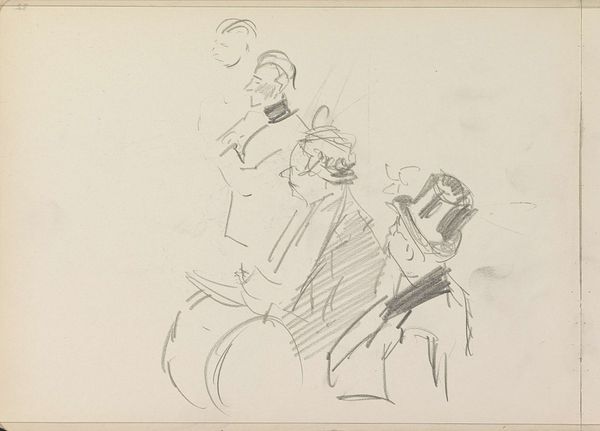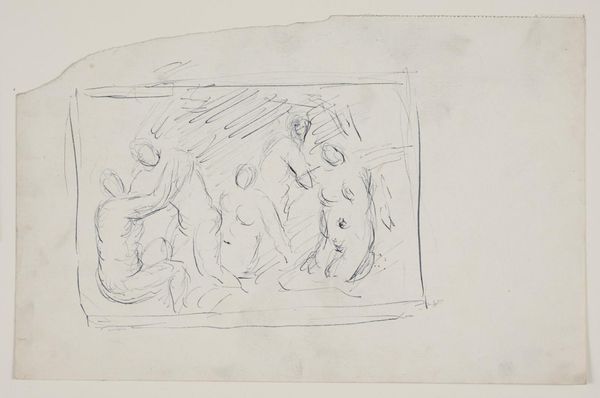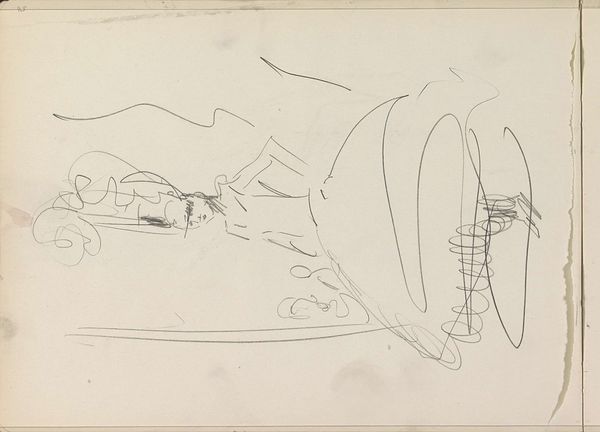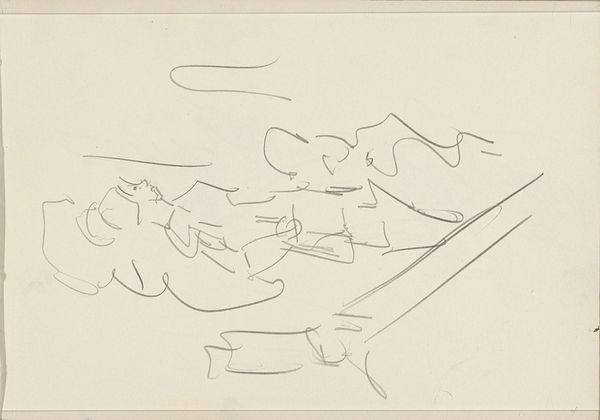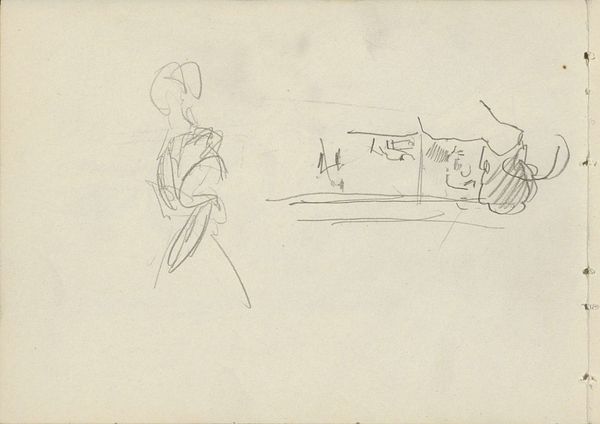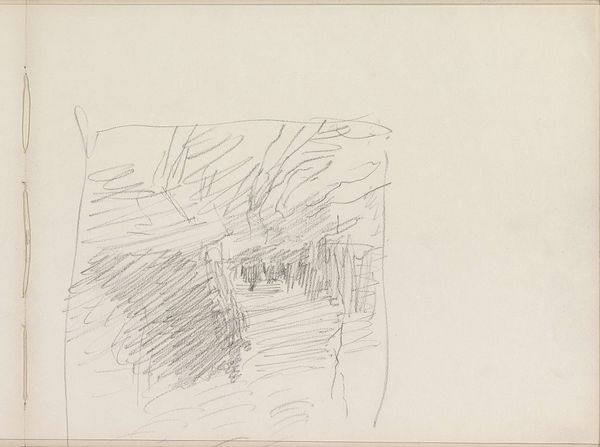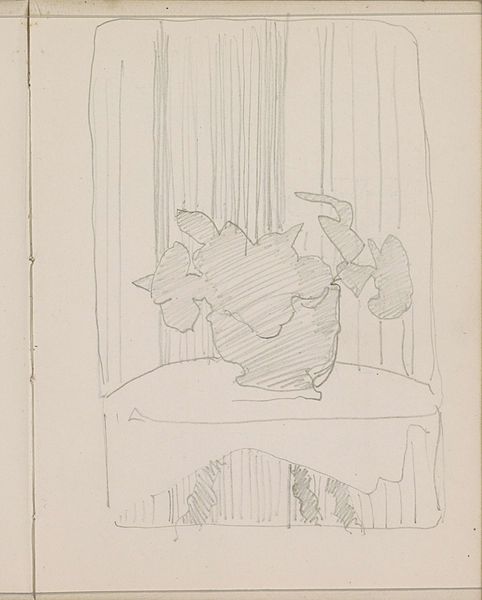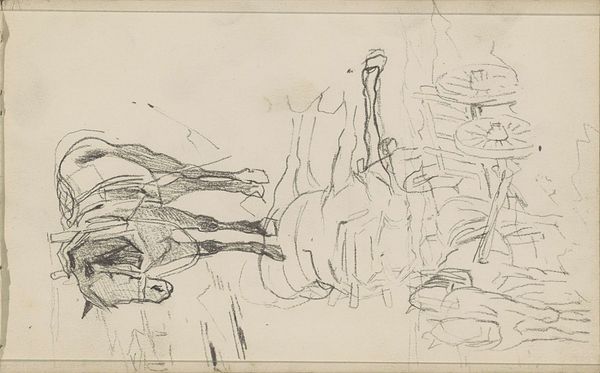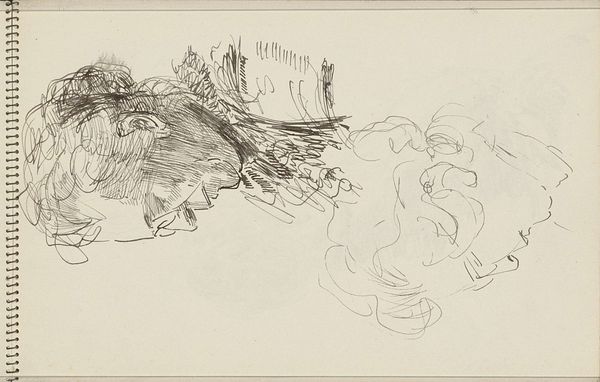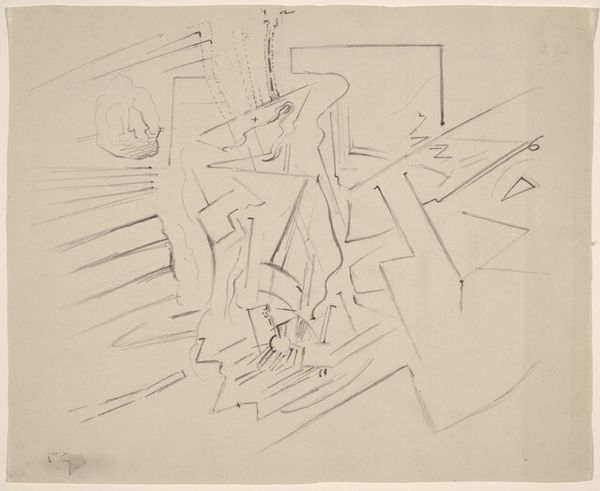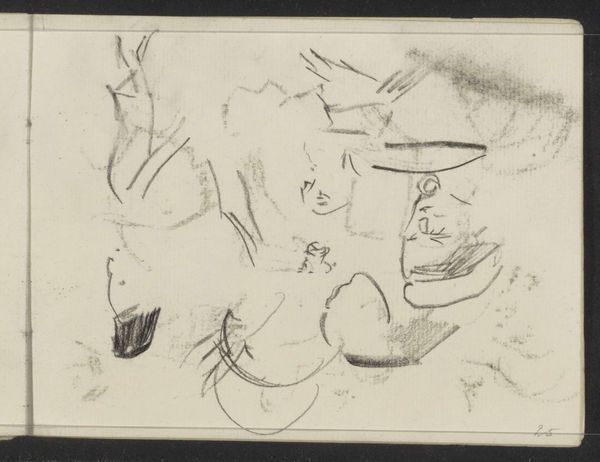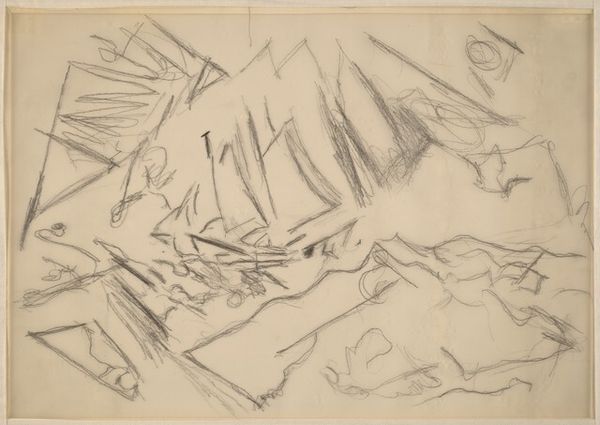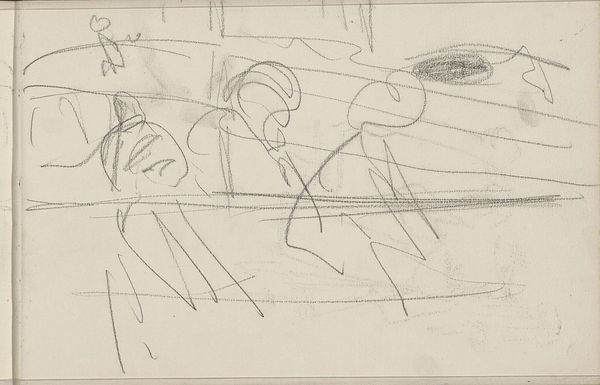
drawing, ink, pen
#
portrait
#
drawing
#
comic strip sketch
#
ink drawing
#
pen sketch
#
figuration
#
personal sketchbook
#
ink
#
idea generation sketch
#
ink drawing experimentation
#
pen-ink sketch
#
line
#
sketchbook drawing
#
pen
#
storyboard and sketchbook work
#
sketchbook art
Dimensions: overall: 22.7 x 30.4 cm (8 15/16 x 11 15/16 in.)
Copyright: National Gallery of Art: CC0 1.0
Editor: Here we have Mark Rothko's "Abstraction," created with pen and ink. It seems like a preliminary sketch, a quick exploration of form. What strikes me is the way the faces are arranged, almost like figures in a fragmented frieze. What do you see in this piece? Curator: It’s fascinating to consider this work as part of Rothko’s broader practice. While he’s renowned for his monumental abstract paintings, this ink drawing reveals a different facet of his artistic development, especially considering he worked within a socio-political context increasingly fascinated by psychoanalysis. Given his later work, do you see hints of the emotive power he'd later unleash through color, here tentatively explored through line and form? Perhaps we’re seeing him grapple with portraying inner states in an era defined by rapid social change and psychological self-discovery. Editor: I suppose the almost cartoonish nature of the faces is surprising given his later, more serious works. So you're suggesting this is more about his journey as an artist, and less about the intrinsic value of the drawing itself? Curator: Precisely! This "Abstraction" may offer insights into the intellectual climate that informed Rothko's artistic choices, including the reception of psychoanalysis. Can you see connections between this period of art and what Rothko later become known for? Also how the concept of expressing emotional depth was becoming increasingly valuable to collectors and curators at that time? Editor: That’s a good point, there is the shared focus on capturing interiority, even though the style is wildly different. The later abstract expressionist works may have been an attempt to communicate similar things, but non-figuratively. Curator: Indeed. Understanding its historical context opens avenues to understanding his broader artistic project and the forces shaping his path. Editor: Well, looking at it now I see that this is a stepping stone. It changes how I see both his early work and the work for which he became famous!
Comments
No comments
Be the first to comment and join the conversation on the ultimate creative platform.
